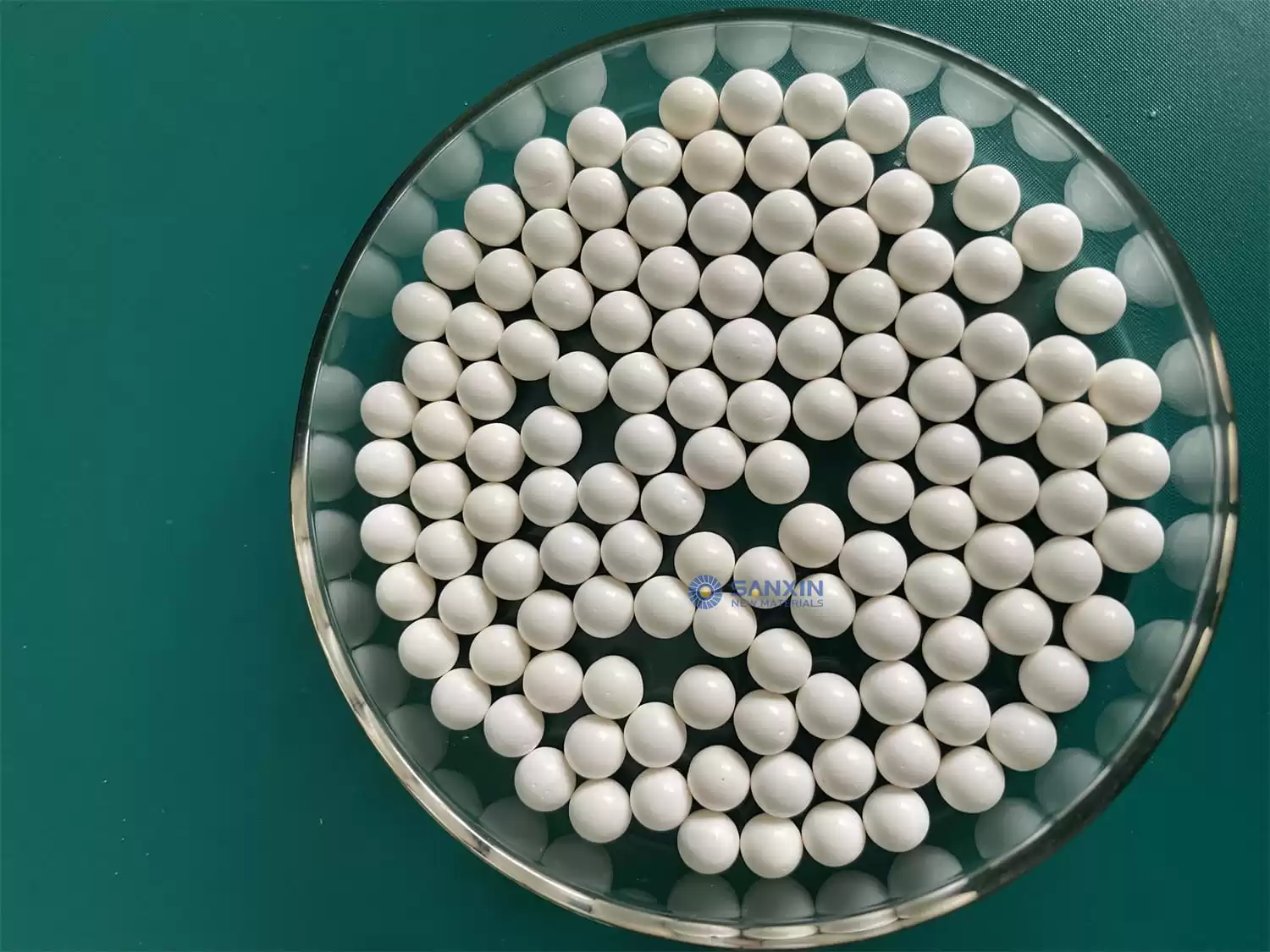Ceramic alumina balls have revolutionized the world of milling kinetics in industries like mining, pharmaceuticals, ceramics, and more. Their unique properties make them indispensable for enhancing milling processes, optimizing particle size reduction, and improving overall efficiency. This article delves deep into the impact of ceramic alumina balls on milling kinetics, providing valuable insights and real-world expertise.

Ceramic Alumina Balls, also known as grinding balls, are high-quality spherical beads crafted from alumina oxide. These balls are widely used in various milling applications due to their exceptional hardness, wear resistance, and thermal stability. The impact of ceramic alumina balls on milling kinetics can be understood through the following aspects:
Enhanced Grinding Efficiency
Ceramic alumina balls exhibit superior hardness and durability, making them highly effective at grinding and dispersing particles. Their uniform shape and composition ensure consistent results, leading to higher grinding efficiency. The abrasive nature of alumina balls accelerates the milling process, reducing the time required to achieve desired particle sizes.
Reduced Wear and Tear
Milling equipment is subjected to intense mechanical forces during operation, resulting in wear and tear. Ceramic alumina balls' remarkable wear resistance minimizes equipment abrasion, prolonging machinery life and reducing maintenance costs. This durability also prevents contamination of milled materials, maintaining product purity.
Optimal Particle Size Distribution
Achieving the desired particle size distribution is crucial in many industries. Ceramic alumina balls play a pivotal role in optimizing particle size reduction processes. Their controlled size and consistent performance contribute to creating uniform particle sizes, leading to improved product quality and performance.
Increased Milling Speed
The combination of hardness and lightweight nature allows ceramic alumina balls to be used at higher milling speeds. This increased speed enhances the impact and grinding action, leading to faster particle size reduction. Consequently, industries benefit from shorter processing times and enhanced productivity.
Energy Efficiency
Efficient milling often translates to energy savings. Ceramic alumina balls' ability to efficiently grind particles with less energy input contributes to reduced operational costs. This energy-efficient approach aligns with sustainable practices and environmental considerations.
Prevention of Cross-Contamination
In industries such as pharmaceuticals and food processing, preventing cross-contamination is crucial. Ceramic alumina balls' inert nature ensures they do not react with milled materials, preventing unwanted chemical interactions and ensuring product integrity.
Versatility in Applications
The impact of ceramic alumina balls extends across a wide range of industries. From mining to ceramics, pharmaceuticals to paints, their versatility makes them a go-to choice for diverse milling needs. This adaptability underscores their significance in optimizing milling kinetics.
Milling kinetics enhancement brought about by ceramic alumina balls can be illustrated through a few key examples:
Mining Industry
In the mining sector, ore refinement requires precise particle size reduction. Ceramic alumina balls aid in breaking down larger ore particles, exposing valuable minerals for extraction. The hardness of these balls ensures efficient grinding without significant wear, contributing to increased productivity.
Pharmaceutical Sector
Pharmaceutical manufacturing demands stringent control over particle sizes for drug formulations. Ceramic alumina balls facilitate micronization, ensuring uniform and fine particles for pharmaceutical products. This not only enhances drug efficacy but also improves dissolution rates.
Ceramic Production
Ceramic materials necessitate precise control over particle sizes to achieve desired properties. Ceramic alumina balls' impact on milling kinetics leads to consistent particle sizes, resulting in uniform ceramic products with enhanced mechanical and thermal properties.
Q: How do ceramic alumina balls enhance milling efficiency?A: Ceramic alumina balls enhance milling efficiency through increased grinding speed, optimal particle size distribution, and energy-efficient grinding.
Q: Are ceramic alumina balls suitable for sensitive materials?A: Yes, ceramic alumina balls are inert and do not react with sensitive materials, making them suitable for industries like pharmaceuticals and food processing.
Q: What industries benefit from ceramic alumina balls' impact on milling kinetics?A: Industries such as mining, pharmaceuticals, ceramics, paints, and more benefit from the enhanced milling kinetics achieved with ceramic alumina balls.
Q: Can ceramic alumina balls replace steel balls in milling processes?A: Yes, ceramic alumina balls are often used as a superior alternative to steel balls due to their hardness, wear resistance, and efficiency.
Q: How do ceramic alumina balls contribute to sustainability?A: Ceramic alumina balls' energy-efficient grinding and prolonged equipment life contribute to reduced energy consumption and environmental impact.
Q: What role do ceramic alumina balls play in pharmaceutical manufacturing?A: Ceramic alumina balls facilitate micronization, ensuring uniform particle sizes in pharmaceutical formulations, leading to enhanced drug effectiveness.
The impact of ceramic alumina balls on milling kinetics is undeniable. From enhancing grinding efficiency to optimizing particle size distribution, these high-quality grinding balls have revolutionized various industries. Their durability, versatility, and energy-efficient properties make them an indispensable asset for achieving efficient and precise milling processes.

Submit your demand,
we will contact you ASAP.

Sanxin New Materials Co., Ltd. focus on producing and selling ceramic beads and parts such as grinding media, blasting beads, bearing ball, structure part, ceramic wear-resistant liners, Nanoparticles Nano Powder

